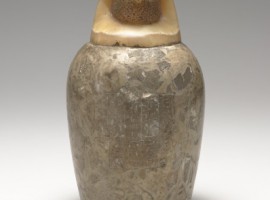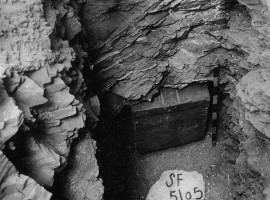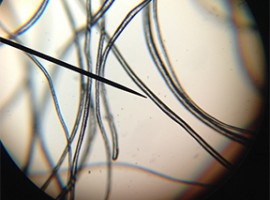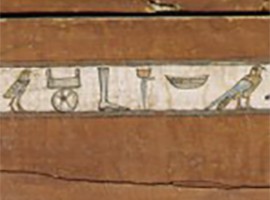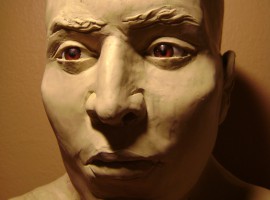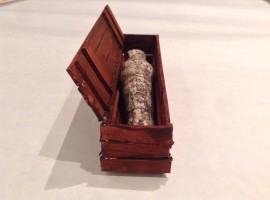Afterlife (noun): the belief that life continues after death in this world
Amulet (noun): an object (often jewelry) meant to give protection against disease, danger, and evil
Art conservation (noun): the protection and care of artwork and museum collections
The Book of the Dead (noun): an ancient Egyptian funerary text; it contained prayers and instructions for safe travel to the Underworld
Egypt (noun): a country in northeastern Africa; its principal geographic feature is the Nile River
Embalm (verb): to preserve (a corpse) from decay
Embalmer (noun): a preserver of bodies
Excavation (noun): the exposure, recovery, and documentation of buried material remains
First Intermediate Period (noun): a period in ancient Egyptian history from ca. 2181 – 2055 BC that saw the breakdown of central authority
Horus (noun): the Egyptian sky god that is signified by a falcon.
Isis (noun): the Egyptian goddess of motherhood, fertility, and medicine
Linen (noun): cloth woven from a type of plant called flax
Middle Kingdom (noun): the period in ancient Egyptian history from 2030 – 1640 BC
Mummification (noun): the process by which Egyptians preserved corpses
Natron (noun): a mineral salt containing sodium carbonate used during the mummification process
New Kingdom (noun): the period in ancient Egyptian history from 1550 – 1070 BC
Nile River (noun): a north-flowing river alongside which Egyptian civilization developed. The Nile flows from Central Africa to the Mediterranean and is the longest river in the world
Nome (noun): one of forty-two administrative territories in ancient Egypt
Old Kingdom (noun): the period in ancient Egyptian history from 2649 – 2150 BC)
Osiris (noun): the Egyptian god of the underworld, the afterlife, and death
Predynastic (adjective): of or relating to the beginning of dynastic Egypt ca. pre-3000 BC)
Resin (noun): a yellow or brown sticky substance that comes from some trees and that is used to make various products; it was applied between linen layers during the process of mummification
Sarcophagus (noun): a coffin in which a body would be placed, often decorated and inscribed
Tomb (noun): a burial monument or chamber
Bibliography
Baines, John R., and Peter F. Dorman. “Egyptian Religion.” Encyclopedia Britannica. N.d. Encyclopaedia Britannica Online School Edition [Encyclopaedia Britannica]. Web. 23 Apr. 2015.
“Horus: Egyptian god.” Encyclopedia Britannica Online. Last modified November 11, 2014. Web. http://www.britannica.com/topic/Horus.Lawrence, Susan V. “Unraveling the Mysteries of the Mummies.” Science News 118.23 (1980): 362-64. JSTOR. Web. 11 June 2015.
Lucas, A. “The Use of Natron by the Ancient Egyptians in Mummification.” The Journal of Egyptian Archaeology 1.2 (1914): 119-23. JSTOR. Web. 11 June 2015.
Margolis, Otto. “Embalming.” Encyclopedia Americana. Grolier Online, n.d. Web. 11 June 2015.
“Mummies.” The Ancient Near East: An Encyclopedia for Students. Ed. Ronald Wallenfels and Jack M. Sasson. Vol. 3. New York: Charles Scribner’s Sons, 2000. 117-19. Gale Virtual Reference Library. Web. 11 June 2015.
Tyldesley, Joyce. “Isis: Egyptian goddess.” Encyclopedia Britannica Online. Last modified November 11, 2014. Web. http://www.britannica.com/topic/Isis-Egyptian-goddess.
Unknown Artist, Coffin of Tjeby, 3rd millennium B.C.. Painted wood with linen-wrapped mummy. Virginia Museum of Fine Arts.
VMFA Docent Manual. Coffin of Tjeby. VMFA, Richmond.
